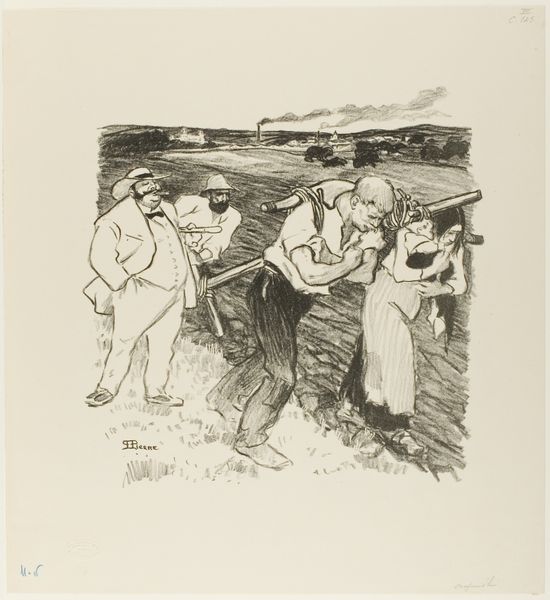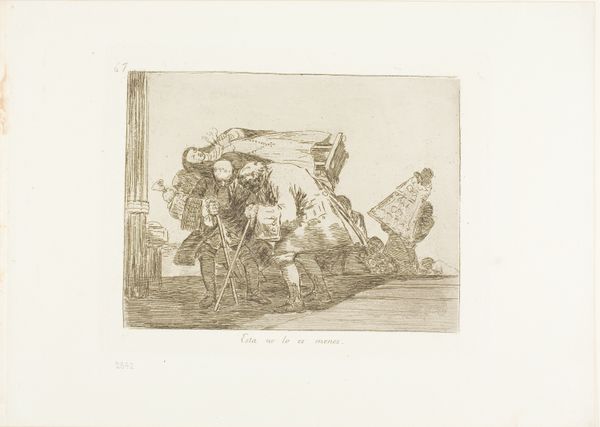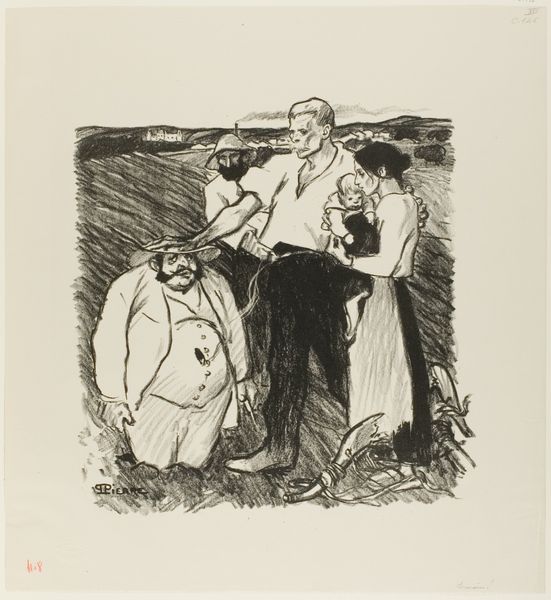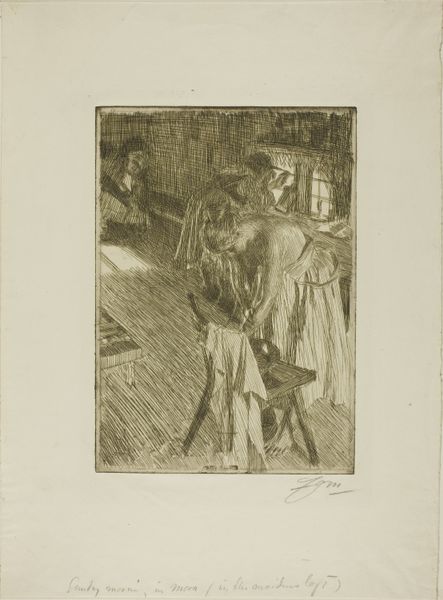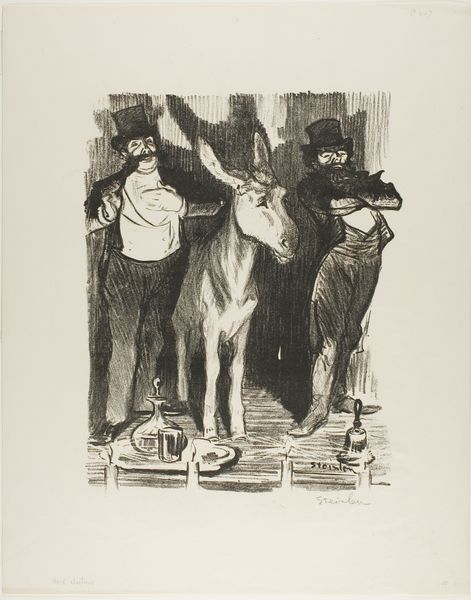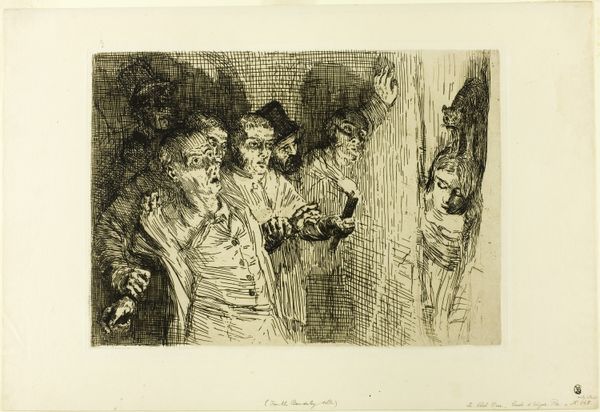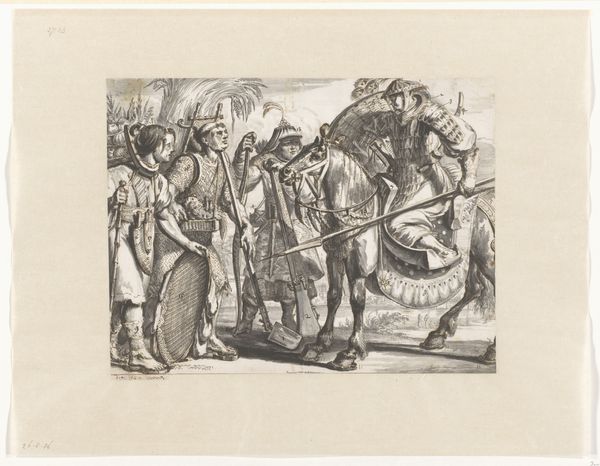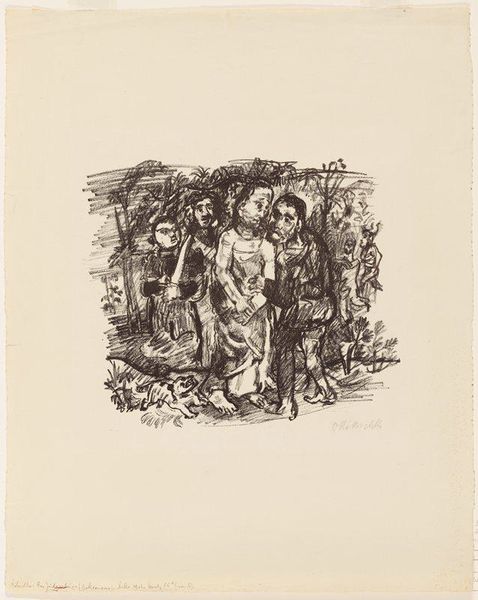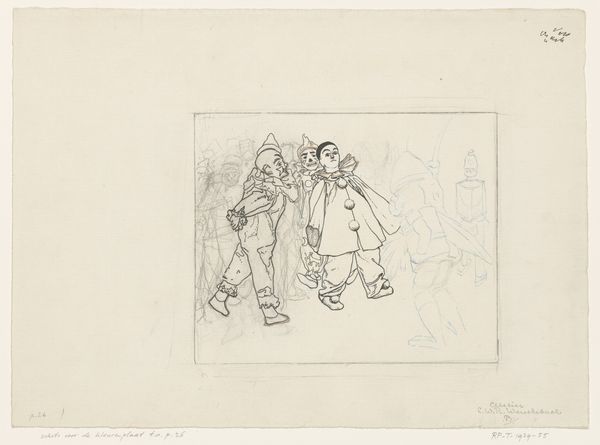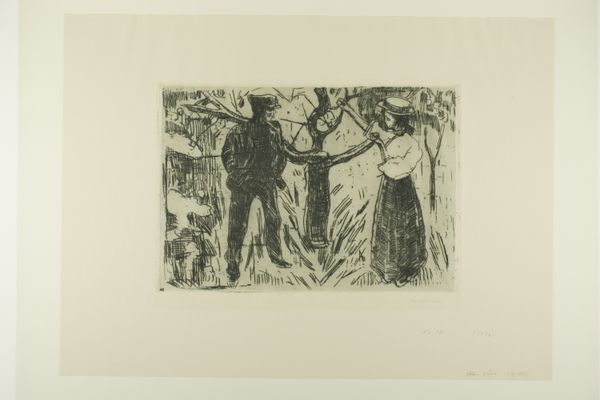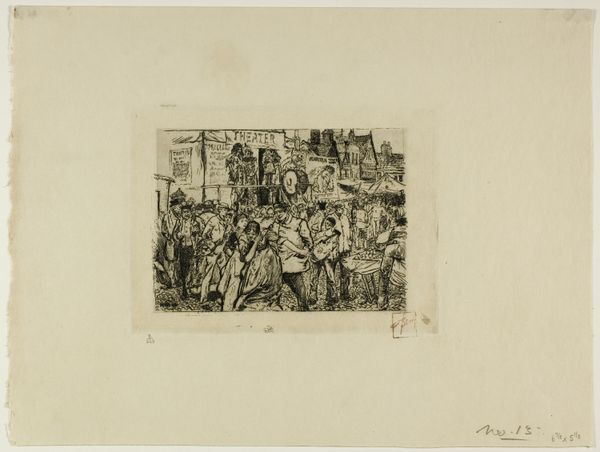
Dimensions: 305 × 297 mm (image); 444 × 548 mm (sheet)
Copyright: Public Domain
Curator: Here we have Théophile Alexandre Steinlen's "Outrage in the Pas-de-Calais," a lithograph drawing on paper, dating back to 1893 and currently held at The Art Institute of Chicago. Editor: The immediate impression is one of stark movement and grim determination. The composition emphasizes the weight and burden of the family fleeing, quite somber even with the apparent simplicity of its style. Curator: Absolutely. Steinlen, who was deeply involved in social justice movements, used printmaking as a means to disseminate potent social commentary widely. Consider the material itself—lithography—how easily it can reproduce and circulate, particularly impacting the working classes. Editor: That's a great point. It’s not just an image; it’s a tool for communicating the struggles of miners, their families, the landscape scarred by industrial exploitation. Notice the industrial silhouette bleeding into the background. It seems to foreshadow how art became inseparable from labor, struggle and distribution of voices unheard by many at that time. Curator: Indeed. Steinlen’s choice of lithography meant this work could be readily available to those directly affected by these events, circumventing the elite art market and traditional exhibition spaces of the time. It questions what truly dictates an art piece beyond just an image and what effect its creation process had at its release and reception. Editor: And beyond the method of reproduction, there's the content itself. It portrays a very human element. A scene of disruption, desperation, yet profound familial love amidst hardship. Steinlen pulls our gaze into an industry town under a critical lens during labor crises. Curator: Exactly. The rough, sketch-like quality mirrors the rawness of their reality. You can almost feel the exhaustion and uncertainty etched on their faces, crafted out from their labor. Steinlen doesn't romanticize, but rather lays bare the toll of industry. Editor: It’s quite moving to see the human stories woven into such a fraught moment in social history, to find tenderness carved out in a world built for callousness. Curator: It’s a testament to the power of accessible art—art not just *about* the people, but *for* the people. Editor: Ultimately, Steinlen offers us more than just a picture. It’s an invitation to reconsider whose voices matter in history.
Comments
No comments
Be the first to comment and join the conversation on the ultimate creative platform.
